#Queen of Elam
Explore tagged Tumblr posts
Text



These are supposed to be Napir-Asu, Princess of Babylon and Queen of Elam. Unlike other give-away wives, Napir-Asu was the mother of the future King of Elam, so she had more status than other wives.
The first woman looks more Middle-Eastern to me than the other women, but she also looks like she was made out of clay and not in a figurative sense. Her costume also strikes me as ancient Near Eastern—not that I would actually know.
Queen Napir-Asu was an interesting woman and more interesting than Queen Hecuba. You can look up Napir-Asu and learn about her life online.
by Midjourney v5
9 notes
·
View notes
Text
You’re telling me Elam Drals, the master assassin, second in command in the Dark Brotherhood, who has been on HUNDREDS of contracts and has bucketloads of stories to tell, left a trail of bright green acid for us to follow after he tried to make a dramatic escape and it WASN’T on purpose? I’m sorry, but after the way he saunters up to those bars and and exclaims with the most pleasantly surprised tone, “well met sister!!! 🥰” then proceeds to subtly suggest we go out to dinner, I simply don’t believe he didn’t plan that.
#*pretends to be shocked that we found him* you’re persistent I’ll give you that 🙄😏#i love him. he’s my little drama queen#elam drals#blackwood
40 notes
·
View notes
Text
The shadow realm is quiet, at rest, a bountiful dark kingdom in the hollow of the earth. No one disturbs its peaceful slumber. And yet.
Jessica Walters rules as gracious queen and tyrant undisturbed; Vivien Leigh and Anthony Perkins plot and scheme as second-in-commands; Fredric March rots away in his kingly dungeon. Little do these rulers know that a new political alliance, steadily growing in strength and number, has formed that could wrest away their power completely—the Scrungly Little Guys Coalition™, dangerous and feral and free.
Only one scrungle can lead this uprising against the powerful. Who is the intrepid champion, a loser of all losers, to lead the shadow realm into a new day?
This is stage one of the coup. There are three other polls in stage one. The top winner of each poll will go on to compete against the others for ultimate victory.
89 notes
·
View notes
Text

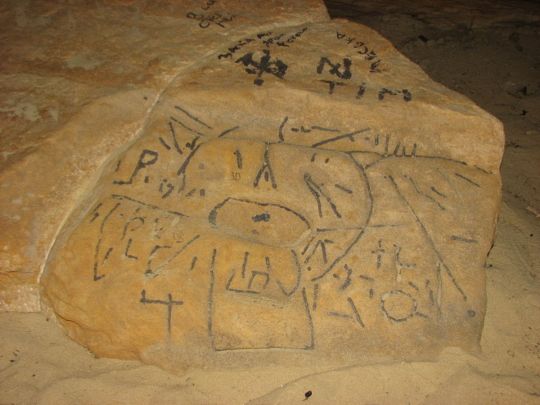
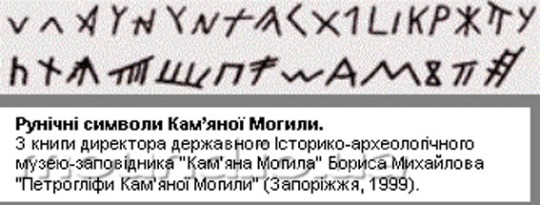
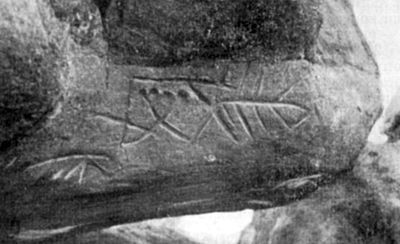
Kamyana Mohyla is believed to contain the first writing in the world.
According to the Ukrainian scientist I. M. Rassokha, most of the inscriptions of Kamyana Mohyla have direct parallels with the ancient Ogamic inscriptions of the British Isles, Germanic "coniferous" runes, ancient Slavic "strokes and cuts", etc., that is, it can be a monument of the most ancient sacred writing of the era of Indo-European unity, namely the Seredniy Stog culture of the 4th millennium BC.
The famous linguist N. Marr proved that the Ukrainian verb "to search" (шукати - shukaty) comes from the Sumerian "shu" - "hand". The Kyivan researcher S. Paukov believes that the Ukrainian words "shana" (honour) and "shanuvaty" (to pay respect) also came from the Sumerian "Shu-Nun" (which is believed to mean "the hand of the queen).
The Sumerologist A.G. Kyfishyn studied the inscriptions of the Kamyana Mohyla (VII-III millennia BC) for a long time and found many parallels with inscriptions on clay tablets of the civilizations of Elam and Mesopotamia (Sumeria): This "writing", as he believes, was invented by the "proto-Sumerians" who lived in "Ukrainian Aratta" as early as the 12th millennium BC, and from there this ancient ethnic group apparently moved to Mesopotamia after the flooding of the Northern Black Sea, which, according to G.A. Kyfishyn, reflected in the biblical message about the World Flood.
Kamyana Mohyla has been occupied by russians since 2022.
124 notes
·
View notes
Text
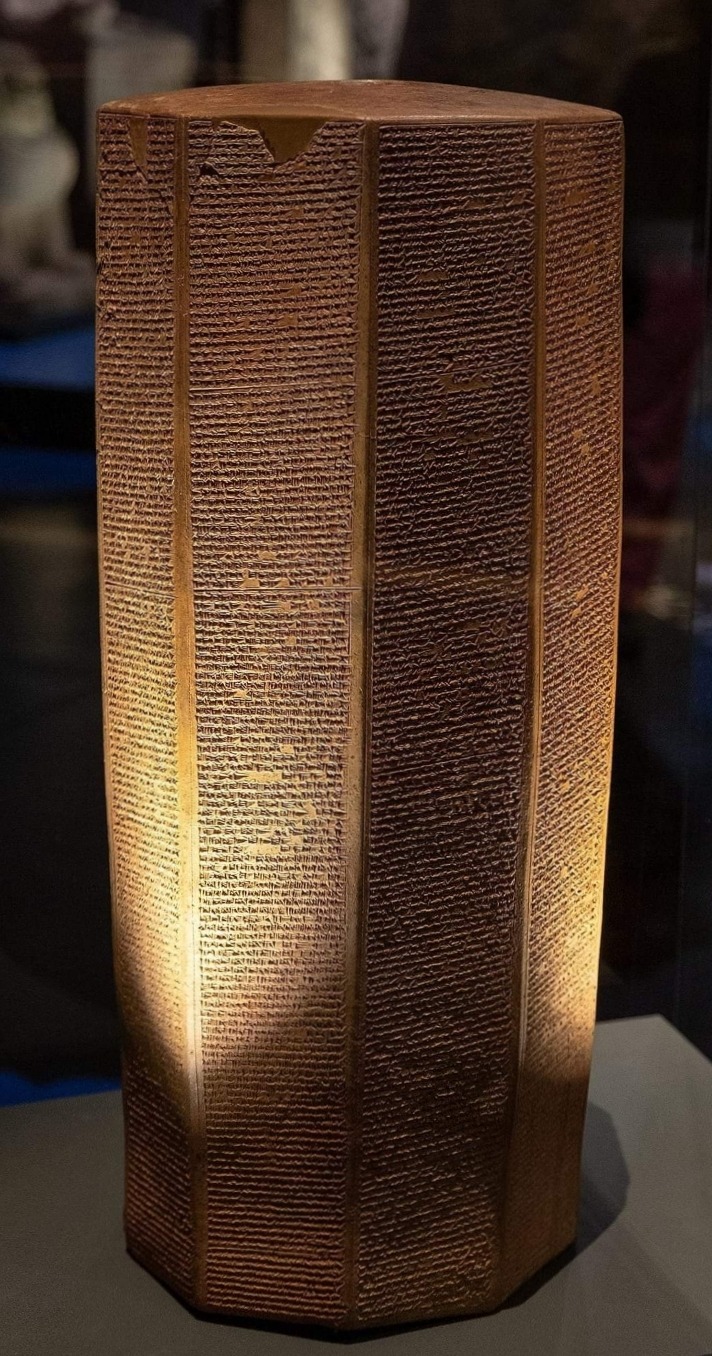
Rassam Cylinder, a ten-sided clay cylinder that was created in c. 643 BC, during the reign of King Ashurbanipal (c. 685 BC - 631 BC) who ruled the Neo-Assyrian Empire from 669 - 631 BC.
It was discovered in the ancient Assyrian city of Nineveh, near Mosul, present-day Iraq, by Hormuzd Rassam (3 October 1826 - 16 September 1910) in 1854.
In over 1,300 lines of cuneiform text, the cylinder records nine military campaigns of Ashurbanipal, including his wars with Egypt, Elam and his brother, Shamash-shum-ukin.
It also records his accession to the throne and his restoration of the Palace of Sennacherib.
The cylinder is the most complete chronicle on the life of Ashurbanipal.
There are some extracts from the cylinder below:
"I am Ashurbanipal, offspring of Ashur and Bêlit, the oldest prince of the royal harem, whose name Ashur and Sin, the lord of the tiara, have named for the kingship from earliest (lit., distant) days, whom they formed in his mother's womb, for the rulership of Assyria; whom Shamash, Adad and Ishtar, by their unalterable (lit., established) decree, have ordered to exercise sovereignty.
Esarhaddon, king of Assyria, the father who begot me, respected the word of Ashur and Bêlit-ilê (the Lady of the Gods), his tutelary (divinities), when they gave the command that I should exercise sovereignty.
In the month of Airu, in the month of Ea, the lord of mankind, the twelfth day, an auspicious day, the feast day of Gula, at the sublime command which Ashur, Bêlit, Sin, Shamash, Adad, Bêl, Nabû, Ishtar of Nineveh, Queen of Kidmuri, Ishtar of Arbela, Urta, Nergal, Nusku, uttered, he gathered together the people of Assyria, great and small, from the upper to (lit., and) lower sea.
That they would accept (lit., guard) my crown princeship, and later my kingship, he made them take an oath by the great gods, and so he strengthened the bonds (between them and me)....
By the order of the great gods, whose names I called upon, extolling their glory, who commanded that I should exercise sovereignty, assigned me the task of adorning their sanctuaries, assailed my opponents on my behalf, slew my enemies, the valiant hero, beloved of Ashur and Ishtar, scion of royalty, am I.
Egyptian Campaign:
"In my first campaign I marched against Magan, Meluhha, Taharqa, king of Egypt and Ethiopia, whom Esarhaddon, king of Assyria, the father who begot me, had defeated, and whose land he brought under his sway.
This same Taharqa forgot the might of Ashur, Ishtar and the other great gods, my lords, and put his trust upon his own power.
He turned against the kings and regents whom my own father had appointed in Egypt.
He entered and took residence in Memphis, the city which my own father had conquered and incorporated into Assyrian territory.
A swift courier came to Nineveh and reported to me.
At these deeds, my heart became enraged, my soul cried out. I raised my hands in prayer to Ashur and the Assyrian Ishtar.
I mustered my mighty forces, which Ashur and Ishtar had placed into my hands. Against Egypt and Ethiopia, I directed the march."
Rassam Cylinder records the reign of Ashurbanipal until c. 645 BC.
The latter years of his reign are poorly recorded, probably due to the fact that the Neo-Assyrian Empire was plagued with troubles.
One of Ashurbanipal's last known inscription reads:
"I cannot do away with the strife in my country and the dissensions in my family; disturbing scandals oppress me always.
Illness of mind and flesh bow me down; with cries of woe I bring my days to an end.
On the day of the city god, the day of the festival, I am wretched; death is seizing hold upon me, and bears me down..."
Rassam Cylinder is currently on display in the British Museum.
A truly remarkable, yet biased, insight into the reign of Ashurbanipal and the world in which he lived.
📷: © Anthony Huan
#Rassam Cylinder#King Ashurbanipal#Neo-Assyrian Empire#Nineveh#Hormuzd Rassam#clay cylinder#cuneiform text#Palace of Sennacherib#British Museum#Assyria#ancient civilizations#Iraq#assyriology#military campaigns#cuneiform cylinder#cuneiform#writing systems
54 notes
·
View notes
Text
🦁🧿🌙 Pre Islamic Goddesses 🌙🕋☀️
Al-Lāt, syrian and arabian goddess of destiny and the city Mecca, Lady of the temple, her Name means „Goddess“ and is the female version of „Allah“, represented by the lion, married to Bel, prototype for the greek goddess of wisdom, Athena, her followers took her figures with them in battles, one of the three goddesses of Mecca, the kaaba 🕋 was build for them, her shrine was a red stone cube
Al-Uzza, syrian and arabian goddess of destiny and the venus, one of the three goddesses of Mecca, the youngest of the them, she got worshipped at the kaaba 🕋 and was the greatest idol of the Qurayash who controlled Mecca, they used to journey to her, offer gifts and sacrifices, her shrine was a white stone cube
Anat, syrian and egyptian goddess of war and protector of wild animals, goddess of love and eternal virgin, mother of all, life and death
Ašera, syrian-canaanite sea goddess
Astarte, semitic goddess of love and fertility
Aštoreth, ugarit goddes, bride of the tyrrhenian sea,
Athirat, ugarit sea and sky goddess, lady of the sea, producer of gods, lady of gods
Ereškigal, sumerian goddess of the underworld and Inannas older sister, she can kill with her eyes, snake goddess, she is naked, with eyes out of stone and black hair, sometimes she wears a lions head and her palace is out of lapislazuli
Han-Ilat, northern arabian big goddess
Inanna, sumerian goddess of war, sex, love and the venus, lady of the sky, lady of all houses, city godess of Uruk, female leader goddess, her symbols are the moon and the star
Išhara, syrian underworld goddess
Ištar, babylonian and mesopotamian goddess of war, sex and the venus, most important diety in the ancient world of middle east, many goddesses are versions of her symbols are lions and the star
Ištar of Arbela, assyrian goddess of war
Kiriša, elamic mother goddess with an aspect of war, Lady of the sky, benefactor of the kings, mother of gods
Kulitta, servant of Ištar/Šauška
Lamaštu, babylonian sky goddess, demon with lion head who eats children and makes people sick, kills innocent people, always around rotten and filthy stuff like feces and dead animals,
Lilithu, sumerian goddess of mischief, misery, the night and the storm who lives in ruins, seduced men and stole children
Manat, arabian goddess of the moon, the venus, destiny, and one of the three big goddesses of Mecca. Her shrine was a black stone cube, pilgrims used to cut their hair at her shrine to conplete their journey to the kaaba 🕋
Nammu, sumerian creator goddess of the primordial sea, created together with her son Enki the first men out of clay
Nanše, sumerian goddess of water sources, and brooks, divination, dream interpretation and the holy order, most important goddess in Lagaš, Mother of her daughters Ninmah and Nunmar
Ninatta, servant of Ištar/Šauška
Ningal, mesopotamian goddess, wige of the moon god Nanna, great queen, high lady, lady, star of the prince, sevenfold light, treasured, goddes of the city Ur, goddess of epiphany, mother of Inanna and the sun god Ut
Ninmah, sumerian goddess of midwivery
Ninsianna, babylonian goddess, rust red lady of the sky, pure and sublime judge, sometimes war goddes with a scimitar and a lion headed club, she is the goddess of venus and she wears a star on hear horned crown
Ninšubur, sumerian goddess and holy servant of Inanna, Lady of the servants, been very popular because she was seen as a messenger between men and gods, seen as personal goddess by some kings, guardian who fights with the weapons of air and the sky
Nisaba, sumerian goddess of corn, goddes of writing texts, science and architecture, sister of Nanše and Ningirsu
Pinikir, elamian, later mesopotamian, hurrian and hittian mother goddess
Šauška, hurrian goddess of love, war, incantations and healing
Tiamat, babylonian goddess of the sea, embodiment of salt water, married to Abzu the embodiment of fresh water
Tunit, punish goddess of fertility and guardian of cartago, virgin mother of Baal, who gives him every year new life, her attributes are pomehrenates, figs, ears of corn and the dove
#al-lat#allat#aluzza#uzza#anat#ašera#ashera#astarte#aštoreth#ereshkigal#ereškigal#Han-Ilat#Hanilat#Inanna#Išhara#ištar#ishtar#kiriša#lamaštu#lilithu#al-manat#manat#nammu#Nanše#Ninatta#Ningal#Ninmah#Ninsianna#Ninšubur#Tiamat
15 notes
·
View notes
Text
Chapter 130 rambles...
Okay, I stayed up late for this chapter so many of my first thoughts are gone, lost in the world of dreams, BUT I still want to try to form any coherant sentences.
Which is hard this chapter becaue when i read it my mind just goes blank. No thoughts behind those eyes lol. Warning: a lot of pictures!
Anyway (spoilers ahead! Read at own risk)
Possessed Innocentis still giving me the creeps eww
NOOOOO not the soldiers that guarded Innocentis!

Like that we are still at the falling stage and have yet to hit the ground (this sounds horrible jesus)

THE REACTIONS OF THE THREE samesies
The panel with the Lusitanian unifrom (is it a unifrom???) just haning there ragged - oof that was a red herring right there! I was convinced that something awful will happen to Estelle...

Aaand we cut to this! The placment of the helmet! Their faces!
I will spare you the image of Innocentis and Amdragoras mangled bodies. @tired-reader-writer has it in their reaction post if anybody wants to see it.
The way Arslan reaches for the helmet! How we can't clearly tell if it is happiness (least likely - thats just not his character) or sadness (also not really likely in my opinion) or just pure shock (most likely)
okay, Elam calm thy self! Because if you say that now then it will most likely not happ-
aaaand I was right!

Eww get back, get back, get back! Do NOT come ANY closer!

The way Elam and Daryun immediatly get into action! Same, Alfarid, same!
~Andragoras, you are a hypocrate and delusional~ You were a shit king and your court was also full of shit. Being a king does not only require to be strong. Maybe you should have listend to Narsus instead of stroking your ego, ey?
Yes, Arslan! Tell him (again)! He will still not get it but tell him!
Oh eh, he-hello Tahamenay...

Oh, why is that momet so fucking tender? It seems he did actually love her...?
Aaand it is over... serves you right, Andycakes!

Love Tahamenays face here. The pure desperation and hatred...

I also like that he slowly excepts his demise and hugs her one last time before dying... Ugh I am a sucker for tragic romances (here one sided though) and the last hug... GAH

The faces of everyone! Alafrid is me through out this entire chapter for real!
Ugh Tahamenay! I have never fell more roller coaster feelings for this woman since her talk with Arslan! You are now free!
Estelle!!!!! No baby don't falter now!
Alafriiiid! My baby, my cutie! I will die for youuuu!!!! (I will put you through so much shit in my AU, I am sorry)

This panel... It makes me feel so dejected...
The citizens stopping Estelle... There is noboy at fault (except the racism against Jaswant. Not cool, guys!)

FARANGIIIIS! My queen to the resque!
The way my heart sank when Estelle opened the door and there was nobody...
And they were save afterall! Thank you, three boys whos names I forgot (sorry)
Oh the news are spreading like wildfire!

Love the different reaction shots! And the diferent levels of emotions! (also side note: Zandeh looks really good here...)
aaand here we go! Straight to hell... here I had hoped that we get at least a little breather...

FUCK NO! GET THAT THING AWAY FROM ISFANT AND KUBARD!
That is NOT Shapur, you two! RUN!
I had such a jumpscare. I was awake and tired at the same time.
No thoughts about my AU this time. Maybe some reaction scenes from Farzin and his army? Will defenitly wait until the kidnapping of Alafrid and Gieve here. Alfarid is way to important right now to just... yoink her from there.
OH! What if the do the same with Vahriz as they are doing with Shapur!? CHABIK REACTION SCENE OOOOOOH!
#arslan senki#the heroic legend of arslan#this was such a roller coaster of a chapter!#so much yet so little happend#or that is how it feels like to me#my brain is empty holy fuck
8 notes
·
View notes
Text
Well, Dilynrae was forced to surrender to Elam last session.
It was either that or he used his furious savagery as the Chosen of Selvetarm to continue to rip the party apart. He almost killed our warforged fighter, 0D in one round. He almost killed Roje, our monk. He almost killed Dilyn's older brother Ristel. He captured her best friend - Vas'riia- mid battle with the very slave collar he planned to use on her.
So she did the only thing she knew would save her family - she surrendered.
Now the party is scrambling to figure out their way to Menzoberranzan, find out where he took her, but also keep continuing the main mission of finding Acererak's phylacteries and finding a way to destroy them.
She's definitely got plans. She planned around the 85% chance he takes her. I rolled several personal wisdom saves for her but she failed all 3. So she sent a message to Vulen pathetically apologizing and confessing her love as Elam put on her new slave collar anti-magic choker - which immediately cut her off from Vulen, the Raven Queen/her 14 warlock levels (she's just a level 4 divine sorc for now), cut off the party's telepathic link, and even cut her off from her innate magic. She was told the only way to remove the choker would be by Elam's will, a Wish, or Actual Divine Intervention.
On the bright side I get to push my fellow players into actually role playing in our ttrpg by being dropped as an (almost) clueless character (Vas'riia- the lesbian disaster) into the party and asking them questions rather than be the mastermind and quiet leader Dilyn was.
#im worried hahahahahah#fuck#oc: dilynrae melarn#oc: Vas'riia Xorlarrin#npc: elam baenre#campaign: Souls of Acererak#x: with you by my side#x: abibil of moonlight#otp: you make me feel#vasriia also was affected by Faezress and got an indefinite madness making her think she can replace Dilyn and fill in her shoes#it fucked
2 notes
·
View notes
Text
Me: I'm going to make the Homecoming AU my version of an obligatory let's-prevent-the-Shattering-AU, what can possibly go wrong.
Things that have already gone wrong:
Godwyn's assassination is prevented by Queelign of all people;
the Golden Lineage is the First House of Noldor and Mohg is Feanor;
Rellana Queen of Liurnia;
the boar is a better sorcerer than half of Raya Lucaria;
Marika is locked in a room with a hornsent and she can't escape;
the giant divine sunflower is the most reasonable character in the cast;
Godrick fights the Carian siblings (and naturally loses miserably, but we commend his spirit);
Needle knight Elam;
Ymir adopts Morgott (good for both of them);
"Burning the Erdtree is a cardinal s... wait Messmer did what five minutes ago"
4 notes
·
View notes
Text
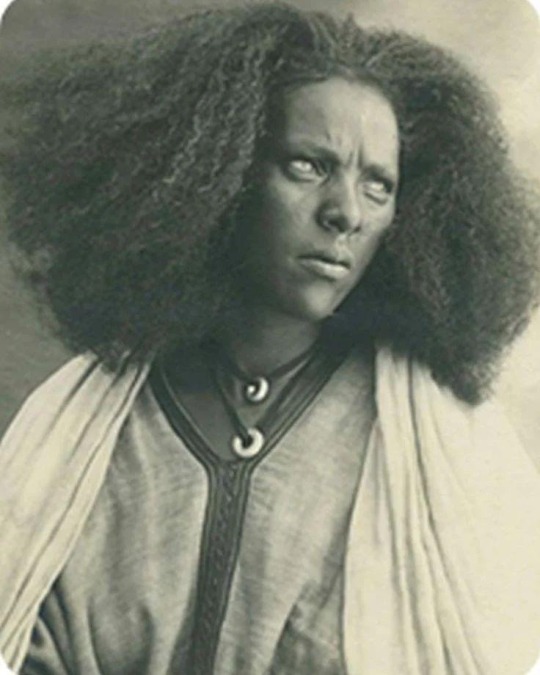



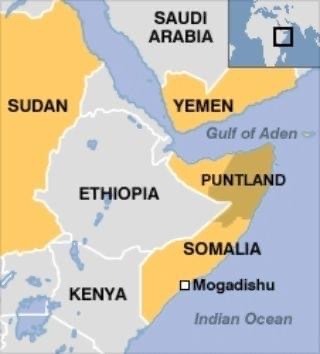
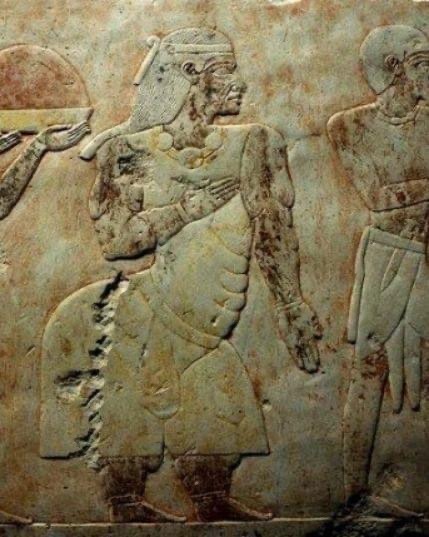
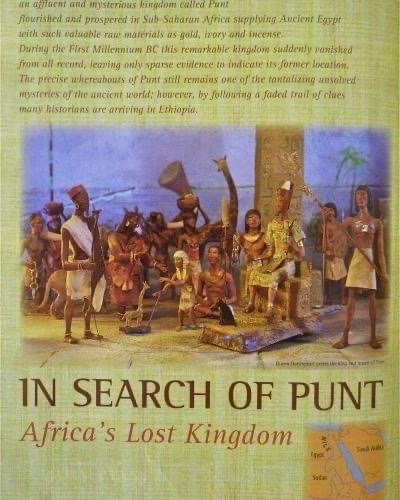
The Land of Punt(Ta netjer, the “land of the gods”)
After the end of the New Kingdom period, Punt became “an unreal and fabulous land of myths and legends.”
At times, the ancient Egyptians called Punt Ta netjer, meaning “God’s Land”.This referred to the fact that it was among the regions of the Sun God, that is, the regions located in the direction of the sunrise, to the East of Egypt. These eastern regions’ resources included products used in temples, notably incense. Older literature (and current non-mainstream literature) maintained that the label “God’s Land”, when interpreted as “Holy Land” or “Land of the gods/ancestors”, meant that the ancient Egyptians viewed the Land of Punt as their ancestral homeland. W. M. Flinders Petrie believed that the Dynastic Race came from or through Punt and E. A. Wallis Budge stated that “Egyptian tradition of the Dynastic Period held that the aboriginal home of the Egyptians was Punt…”.The term was not only applied to Punt, located southeast of Egypt, but also to regions of Asia east and northeast of Egypt, such as Lebanon, which was the source of wood for temples.
Location
The oldest known expedition to Punt was organized by Pharaoh Sahure of the 5th dynasty (2458-2446 BC). Also around 1950 BC, in the time of King Mentuhotep III, 11th dynasty (2004-1992 BC), an officer named Hennu and three thousand men from the south transported material for building ships through Wadi Hammamat, and to Punt acquiring a number of exotic products including incense, perfume and gum was brought to Egypt. A very famous expedition was for Queen Hatshepsut in the 18th dynasty (1473-1458 BC). It was formed of five ships, each measuring 70 feet long, and with several sails. These accommodated 210 men, including sailors and 30 rowers, and was led by the Nubian general “Nehsi”. They departed at Quseir on the Red Sea for what was primarily a trading mission, seeking frankincense and myrrh, and fragrant unguents used for cosmetics and in religious ceremonies. However, they also brought back exotic animals and plants, ivory, silver and gold. A report of this voyage is left behind as temple reliefs in Deir el-Bahri, Egypt (see reliefs below). The reliefs shows the departure of the expedition, its arrival at the mysterious land, the landing of the ships with the gifts by the Puntine leader to Hatshepsut, and the preparations for the return voyage. The temple reliefs also showed the features of the Puntine people, who were black Africans, as well as another race much resembling Egyptians. Donkeys were depicted as the method of transporting goods, and white dogs guarding the people’s houses. Birds, monkeys, leopards and hippopotamus are also seen, as well as giraffes which are typical African animals, to live in Punt. The Nubian Nehsi is then shown in front of his tent with a banquet offered to his guests, and observing the gifts presented.
And then there is the story of The Shipwrecked Sailor, 2200 BC which references Punt.
Petrie, W.M. Flinders. The Making of Egypt, London. New York, Sheldon Press; Macmillan, 1939:
Page 77
“Some of the most obvious public works of the 1st dynasty were the carrying on of earlier undertakings. The great historical maces, and the irrigation works, had been developed under the Scorpion king of the Aunu, and both may have originated much earlier. Many vases and bowls bear his name.”
“Origins in Elam and Punt. The distinctive character of the 1st dynasty, which separates it from all that went before, is the conquest and union of the whole land of Egypt. It became thus subject to the falcon-bearing tribe of Horus, which was the natural enemy of the Aunu, the Set-bearing tribe. This falcon tribe had certainly originated in Elam, as indicated by the hero and lions on the "Araq knife handle”. They went down the Persian Gulf and settled in the “horn of Africa.” There they named the “Land of Punt,” sacred to later Egyptians as the source of the race. The Pun people founded the island fortress of Ha-fun, which commands the whole of that coast, and hence came the Punic or Phoenic peoples of classical history. Those who went up the Red Sea formed the dynastic invaders of Egypt, entering by the Qocier-Koptos road. Others went on to Syria and founded Tyre, Sidon and Aradus, named after their home islands in the Persian Gulf (Strabo, XVI, iii, 4). This migration formed the basis of the great spread of Puni, by the colonies of Carthage around the Mediterranean, and into the Atlantic on both north and south.“–W.M. Flinders Petrie
The Oxford History of Ancient Egypt, Ian Shaw, p. 317, 2003:
"There is still some debate regarding the precise location of Punt, which was once identified with the region of modern Somalia. A strong argument has now been made for its location in either southern Sudan or the Eritrean region of Ethiopia, where the indigenous plants and animals equate most closely with those depicted in the Egyptian reliefs and paintings.
It used to be assumed (primarily on the basis of the scenes at Deir el-Bahri depicting Hatshepsut’s expedition to Punt in the mid-18th Dynasty) that the trading parties travelled by sea from the ports of Quseir or Mersa Gawasis, but it now seems likely that at least some of the Egyptian traders sailed south along the Nile and then took an overland route to Punt, perhaps making contact with the Puntites in the vicinity of Kurgus, at the fifth cataract.
The Deir el-Bahri scenes include depictions of the unusual Puntite settlements, comprising conical reed-built huts set on poles above the ground, and entered via ladders. Among the surrounding vegetation are palms and myrrh trees, some of the latter already in the process of being hacked apart in order to extract the myrrh. The scenes also show myrrh trees being loaded onto the ships so that the Egyptians could produce their own aromatics from them (and it has been argued that this in itself may be an argument for the combined Nile-overland route from Punt to Egypt, given the fact that such plants might well have died during the more difficult voyage northwards along the Red Sea coast). These myrrh trees might even have been replanted in the temple at Deir el-Bahri itself, judging from the surviving traces of tree pits there.”
The oldest known expedition to Punt was organized by Pharaoh Sahure of the 5th dynasty (2458-2446 BC). Also around 1950 BC, in the time of King Mentuhotep III, 11th dynasty (2004-1992 BC), an officer named Hennu and three thousand men from the south transported material for building ships through Wadi Hammamat, and to Punt acquiring a number of exotic products including incense, perfume and gum was brought to Egypt. A very famous expedition was for Queen Hatshepsut in the 18th dynasty (1473-1458 BC). It was formed of five ships, each measuring 70 feet long, and with several sails. These accommodated 210 men, including sailors and 30 rowers, and was led by the Nubian general “Nehsi”. They departed at Quseir on the Red Sea for what was primarily a trading mission, seeking frankincense and myrrh, and fragrant unguents used for cosmetics and in religious ceremonies. However, they also brought back exotic animals and plants, ivory, silver and gold. A report of this voyage is left behind as temple reliefs in Deir el-Bahri, Egypt (see reliefs below). The reliefs shows the departure of the expedition, its arrival at the mysterious land, the landing of the ships with the gifts by the Puntine leader to Hatshepsut, and the preparations for the return voyage. The temple reliefs also showed the features of the Puntine people, who were black Africans, as well as another race much resembling Egyptians. Donkeys were depicted as the method of transporting goods, and white dogs guarding the people’s houses. Birds, monkeys, leopards and hippopotamus are also seen, as well as giraffes which are typical African animals, to live in Punt. The Nubian Nehsi is then shown in front of his tent with a banquet offered to his guests, and observing the gifts presented.
And then there is the story of The Shipwrecked Sailor, 2200 BC which references Punt.
[right] chief of Punt “Parakhu”; [left] his wife queen “Aty”
Original copy at the Museum at Cairo (No. 34419)
There is still some debate regarding the precise location of the mythical land of Punt:
Breasted, James Henry, Ph.D., Ancient Records of Egypt, Historical Documents, Vol. II, 1906:
Pages 102-104
“These are undoubtedly the most interesting series of relief’s in Egypt, and form almost our only early source of information for the land of Punt. They are as beautiful in execution as they are important in content. They record an important expedition of the queen thither, which was successfully concluded just before her ninth year.”
“The only earlier evidences of intercourse with Punt are as follows: In the Fourth Dynasty a Puntite negro appears as the slave of one of the sons of King Khufu, in the Fifth, King Sahure sent an expedition thither, and King Isesi sent another, which brought back a dancing dwarf; in the Sixth, an officer of Pepi II, named Enenkhet, was killed by the Sand-dwellers on the coast, while building a ship for the Punt voyage, and another expedition thither under the the same king was led by assistant treasurer, Thethy; in the Eleventh Dynasty, Henu, chief treasurer of King Senekhkere-Mentuhoptep III, dispatched an expedition to Punt, which he accompanied only to the coast of the Red Sea; in the Twelfth Dynasty, an officer of Amenemhet II, named Khentkhetwer, records his safe return from Punt; and finally there was also an expedition under Sesostris II.”
“The question of the location of Punt is too large for discussion here, but is was certainly in Africa, and probably was the Somali coast.”
“Historically, it is important to note that Thutmose III appears only once in the Punt reliefs, and that in a subordinate position, so that, as far as this source is concerned, the queen is the author of the expedition, which she undertakes in accordance with an oracle of Amon”.
Page 117
Punt under the Queen
“But I will cause thy army to tread them, I have led them on water and on land, to explore the waters of inaccessible channels, and I have reached the Myrrh-terraces. It is a glorious region of God’s-Land; it is indeed my place of delight. I have made it for myself, in order to divert my heart, together with Mut, Hathor, Wereret (Isis), mistress of Punt, the mistress, ‘Great in Sorcery’, mistress of all gods. They took myrrh as they wished, they loaded the vessels to their hearts’ content, with fresh myrrh trees, every good gift of this country, Puntites whom the people know not, Southerns of God’s-Land. I conciliated them by love that they might give to thee praise, because thou art a god, because of thy fame in the countries. I know them, I am their wise lord, I am the begetter, Amon-Re; my daughter, who binds the lords, is the king [Makere] (Hatshepsut). I have begotten her for myself. I am thy father, who sets thy fear among the Nine Bows, while they come in peace to all gods. They have brought all the marvels, every beautiful thing of God’s-Land, for which thy majesty sent them: heaps of gum of myrrh, and enduring trees bearing fresh myrrh, united in the festival-hall, to be seen of the lord of the gods. May thy majesty cause them to grow. My temple, in order to delight my heart among them. My name is before the gods, thy name is before all the living, forever. Heaven and earth are flooded with incense; odors are in the Great House. Mayest thou offer them to me, pure and cleansed, in order to express the ointment for the divine limbs, to offer myrrh, to make ointment, to make festive my statue with necklaces, while I am making libations for thee. My heart is glad because of seeing thee.”–James Henry Breasted
The loading of the ships.
Plate from The Road to Punt, F.D.P. Wicker, The Journal of African History, Vol. 12, No. 1 (1971), 162.
18 notes
·
View notes
Note
RUDY AND MADISON ARE NOMINATED FOR MTV'S BEST KISS
I WANT TO SEE ELAME'S FACE
i saw it and i really would pay all my money to see rudy’s reaction to that nomination! also, bailey retweeted it, she’s literal jiara queen here 🙌🏼
elaine doesn’t bother me like at all, buuuut imagine having a red carpet photo of madison/mariah/rudy/elaine altogether. that photo would break the internet
anyway, go vote for jiara as best kiss cause it’s a one time opportunity for them to get nominated like that so they have to win!
#ask#if jiara doesn’t win what the point of that award#jiara#rudison#rudy pankow#madison bailey#obx#outer banks
8 notes
·
View notes
Text
Lex Luthor drains The Light's bank account
THE LIGHTS BASE
-------
June 8, 23:30
Vandal Savage: What the hell, what happened to my 100k?
Queen Bee: Uhh, I don't know, maybe Luthor did something.
Klairon: Yeah, he spends every single penny on his useless inventions that could be made with magic for free.
Ultra-Humanite: ALRIGHT WHY ARE YOU GUYS LOOKING AT ME, IM A MONKEY AND ALL BUT I DON'T EVEN EAT BANANAS
Lex Luthor: Alright fine I spent it on Genshin Impact, but refresh your Paypal, I already gave it back.
Vandal Savage: Yeah, you did, but...
Deathstroke: But what? my gun is always ready to fire and all...
Vandal Savage: No, don't kill him, he manages our expenses and all. BUT we gotta cure him of the Genshin Impact.
Lex Luthor: What the hell does that mean?
Vandal Savage: We gotta make you forget the game.
Lex Luthor: Dont, or else I will stop funding you.
Vandal Savage: Remember, we have bombs on your Lexcorp building.
*Lex Luthor is silent*
Vandal Savage: Also, I know just the perfect guy, or I'd say gal. Any of you remember Black Manta?
Deathstroke: So you're planning to control Miss Martian? That would be like essentially bombing this base right here, right now.
Vandal Savage: Don't worry, I have a plan with some magic.
New York City
--------
June 9, 4:20
Miss Martian: Vandal! You will not hurt ANYONE as long as I am here.
Vandal Savage: po dna elam amgis yrev si tnassap ne osla ssehc ni eceip tseb eht si koonk eht (this is backwards language, aka zattana's spell language btw)
Miss Martian: What is your order, Master?
Vandal Savage: Come with me.
THE LIGHTS BASE
-----
June 9, 9:10
Lex Luthor: WHAT THE HELL VANDAL I JUST WOKE UP AND OH MY GOD IS THAT MISS MARTIAN DON;T WORRY IM CALLING MERCY
Vandal Savage: No, she's under my control. Miss Martian, you have 24 hours to make Lex Luthor forget Genshin Impact.
Miss Martian: Alright.
*she enters Lex Luthor's mind*
Miss Martian: There you go, the genshin part, just have to destroy it and all.
*she does that and leaves instantly*
Lex Luthor: Oh my god, who installed this genshin impact thing on my phone?
Klairon: get pranked baldy
Lex Luthor: That's impressive, you somehow managed to crack my 420 digit password.
Klairon: magic and all lmao
Vandal Savage: I think I can keep Martian with me for a while. but THANK GOD that he was actually cured in 10 minutes.
Miss Martian: Actually, I just wanted to see how this was going. I faked being controlled, and when you told me that you want to cure Luthor of Genshin Impact, I just did because according to my friends, it is very morally correct. Or based. Now, I'll leave. Bye, Luthor.
5 notes
·
View notes
Text
The Shadow Rising, Chapter 43 - Care for the Living
(THIS PROJECT IS SPOILER FREE! No spoilers past the chapter you click on. Curious what I'm doing here? Read this post! For the link index and a primer on The Wheel of Time, read this one! Like what you see? Send me a Ko-Fi.)
(Wolf icon) In which I want to pat his head.
PERSPECTIVE: Perrin goes to the inn with Verin, as most of the young men reunite with their families. Feelings are all mixed, except in those who have lost loved ones. Faile worries over Perrin, but he says he just got a little lightheaded getting off the horse. He's really worrying over the lost men, and trying to stay focused on getting help for those still alive.
Some young men come to see Perrin, friends who had been adjacent to his and Mat's and Rand's activities, so Perrin asks where Loial is (cutting trees, someone was sent to tell the men Perrin and co had come back, he'll be here soon probably) and where Luc is. One of them, Elam, says Luc isn't here, but he hopes he comes back soon. Luc was teaching him how to use a sword, and he'd be a king if he had his rights, king of Andor. Perrin says Andor has queens, not kings.
Verin says Luc does have a way of causing trouble when he's here, though. Yesterday, for example, he led a delegation of mostly Coplins and Congars without anyone else's knowledge and told Whitecloaks not to come within ten miles of Emond's Field. She thinks it's not wise or particularly necessary to antagonize them. Perrin thinks Luc couldn’t have had anything to do with the Trollocs if he was in EF the day before.(1)
Perrin recognizes one of the young men, who's grown up quite a bit in a year and change, and they all start asking him questions about the outside world. Mostly, Perrin tells them adventure is about trying not to get your head split open, and going without either food, water, or a bed as often as not. They don't quite believe him.(2)
Loial arrives, and Faile shoos out the other young men. Perrin asks how the Waygate could be unlocked, and Loial says he only put the two keys on the outside, so anyone on this side could still unlock it at need. He couldn't bring himself to destroy the gate's usefulness more permanently.
Loial offers to go fix it, but Perrin says he's going to go, as soon as Alanna gets his side Healed up. She arrives just as Faile starts to realize Perrin is feverish. They move him to the kitchen table, where he murmurs about apprenticing to Master Luhhan, then muses as she smiles wanly at him that Faile's mouth isn't too wide but just right. She presses a leather-wrapped stick into his mouth and tells him to "Bite down, my heart, it will hurt."
He wants to ask her what will hurt, but gets distracted, thinking of taking her hunting. Then he recognizes the feel of the One Power working in him. Then there's pain, and he hears the stick snap in his teeth as he passes out.
=====
(1) Of course. Even if he's Slayer, he can only speed travel in TAR, right? Unless… the Wise Ones did mention some method of entering TAR fully in the flesh, having no body left outside at all, but they said it would corrupt you over time to use it. Well, that can't mean anything, can it? (2) Perrin realizing how young his contemporaries still are because they haven't had his adventures is really cute, in that "oh, honey, you haven't grown up that much more, you've just been in mortal peril" kind of way.
#wheel of time#wot#the wheel of time#twot#tsr#the shadow rising#wot wolf icon#perrin aybara#faile bashere#mistress ahan#verin mathwin#dannil lewin#ban al'seen#alanna mosvani#gaul (wot)#bain (wot)#chiad (wot)#dav ayellin#elam dowtry#ewin finngar#tam al'thor#abell cauthon#marin al'vere#alsbet luhhan#loial
1 note
·
View note
Text




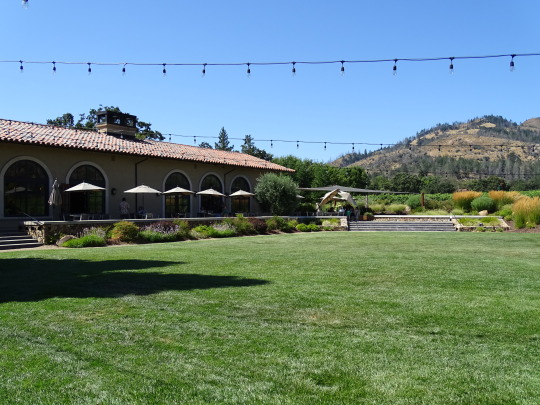


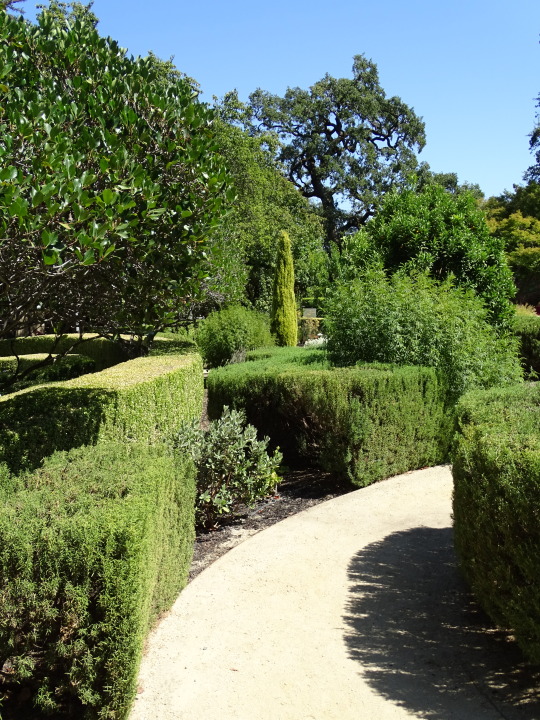



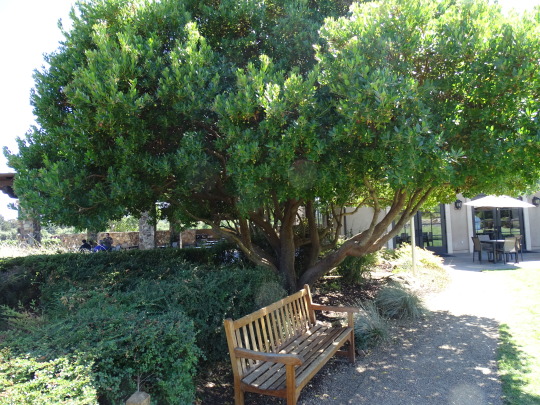


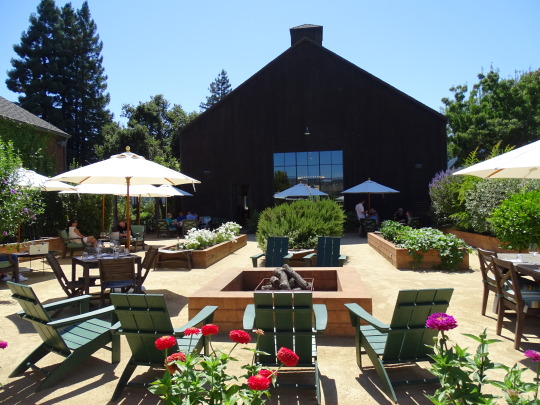



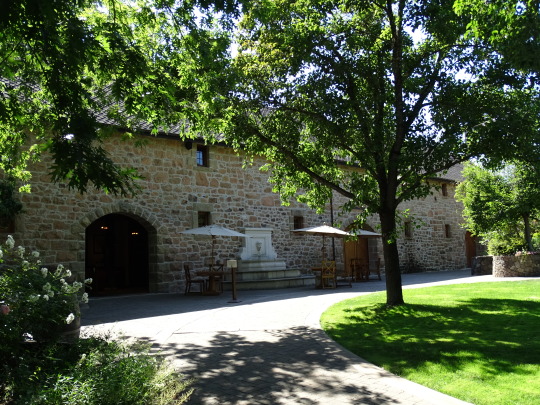

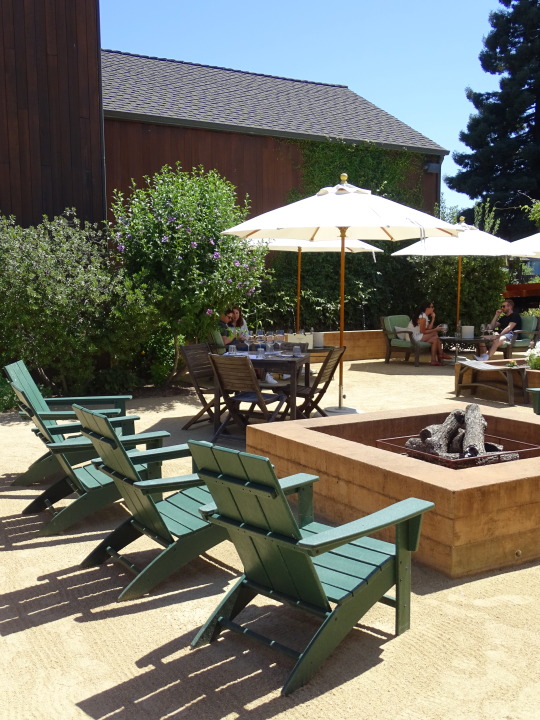


National Public Gardens Day
Get outside, get some fresh air, and literally stop and smell the roses by finding a public garden to stroll through and enjoy, by yourself or with those you love.
There are many different ways to define the word garden. Indeed, the term stretches to include everything from a small piece of land where flowers are grown to areas where we can plant fruit and veg. Similarly, gardens can be wide-open spaces that are filled with a large assortment of different plants. These public spaces are often the perfect spot to spend time with family and friends outside or enjoy some incredible entertainment. It’s not uncommon for public spaces to be used for outdoor theater and live music. These areas are known as public gardens.
Public gardens – the beautiful centerpieces to cities and large communities. Filled with different assortments of flora and fauna, they are the bright and colorful beacon in the middle of a large and dully-colored metropolis. They’re a reminder of the beauty that nature holds, a great place for picnics, and taking kids out for a play date. But where did the first public garden originate and when? Come with us as we delve into the past of National Public Gardens Day!
History of National Public Gardens Day
Mesopotamia, the “land between the rivers” Tigris and Euphrates, comprises a hilly and mountainous northern area and flat, alluvial south. Its peoples were urban and literate from about 3,000 BC.
Evidence for their gardens comes from written texts, pictorial sculpture, and archaeology. In western tradition, Mesopotamia was the location of the Garden of Eden and the Hanging Gardens of Babylon. Temple gardens developed from the representation of a sacred grove. Several distinct styles of the royal garden are also known.
The courtyard garden was enclosed by the walls of a palace. On a larger scale was a cultivated place inside the city walls. At Mari on the Middle Euphrates (c 1,800BC), one of the huge palace courtyards was called the Court of the Palms. It is crossed by raised walkways of baked brick; the king and his entourage would dine there.
At Ugarit (1,400BC) there was a stone water basin, not located centrally as in later Persian gardens, for the central feature was probably a tree (date palm or tamarisk). The 7th century BC Assyrian king Assurbanipal is shown on a sculpture feasting with his queen, reclining on a couch beneath an arbor of vines, and attended by musicians.
Trophies of conquest are on display, including the dismembered head of the king of Elam hanging from a fragrant pine branch! A Babylonian text from the same period is divided into sections as if showing beds of soil with the names of medicinal, vegetable, and herbal plants written into each square, perhaps representing a parterre design.
On a larger scale, royal hunting parks were established to hold the exotic animals and plants which the king had acquired on his foreign campaigns. King Tiglath Pileser I (1,000BC) lists horses, oxen, asses, deer, gazelle, and ibex, boasting “I numbered them like flocks of sheep.”
From around 1,000 BC the Assyrian kings developed a style of city gardening incorporating a naturalistic layout, running water supplied from river headwaters, and exotic plants from their foreign campaigns.
Assurnasirpal II (883-859BC) lists pines of different kinds, including cypresses, junipers, almonds, dates, ebony, rosewood, olive, oak, tamarisk, walnut, terebinth, ash, fir pomegranate, pear, quince, fig, and grapevines. “The canal water gushes from above into the gardens; fragrance pervades the walkways; streams of water as numerous as the stars of heaven flow in the pleasure garden…
Like a squirrel, I pick fruit in the garden of delights.” The city garden reached its zenith with the palace design of Sennacherib(704-681BC) whose water system stretched for 50 km into the hills. The garden was higher and more ornate than any other and he boasted of the complex technologies he deployed, calling his garden palace “a Wonder for all Peoples”.
While public gardens may have origins deep in the past, Public Garden Day is a fairly modern celebration. Celebrations began in 2009 and it was created as a way to both enjoy and celebrate these beautiful spaces. The day is also a time where there are campaigns to build awareness around these spaces and what they mean to the local community. As well as often being a prime location for public events, public gardens may also be an area for environmental conservation. As such, it’s common to find that on this day, there are campaigns to draw attention to this and ensure that both tourists and locals remember these locations.
Some people also view this day as the beginning of spring. This isn’t the official start of spring of course, but it does seem to be a time where more people go out and enjoy nature with their loved ones and people that they hold dear.
How to celebrate National Public Gardens Day
From roses to chrysanthemums, all we have to do is go outside to a public garden and admire the variety of flora. The beauty of nature is not one to take lightly. So, let’s get out there! Maybe we can even plant our own gardens to add some color to our homes.
The biblical Book of Genesis mentions the Tigris and Euphrates as two of the four rivers bounding the Garden of Eden. No specific place has been identified although there are many theories.
The Hanging Gardens of Babylon are listed by classical Greek writers as one of the Seven Wonders of The World. The excavated ruins of Babylon do not reveal any suitable evidence, which has led some scholars to suggest that they may have been purely legendary. Mesopotamia is believed to be the origin of the public garden and we’d have to say we don’t disagree.
Source
#National Public Gardens Day#NationalPublicGardensDay#second Friday of May#10 May 2024#original photography#Sonoma#Napa Valley#Brix Restaurant & Gardens#St. Helena#summer 2023#Beringer Vineyards#Freemark Abbey Winery#Louis M. Martini Winery#tourist attraction#landmark#countryside#flora#nature#California#West Coast#architecture#St. Francis Winery & Vineyards#USA#travel#vacation#landscape#cityscape#Turnbull Wine Cellars
1 note
·
View note
Text
I want to write a story and I'm looking for help!
Hi! Hello! How are you? Are you a writer? A reader? A random human being who just got across this post?
Either it's fine. I'm all of them myself.
The important thing here is that you may be interested in helping me write a story (and possibly become friends who help each other write).
But what does that intel, stranger who wrote this post?
Glad you asked. I'd love to tell you.
Since the very very beginning of my consciousness I've wanted to tell stories. I'd even go to the extent of saying it is the first thing I remember wanting. And, of course, I've been trying to do so ,but everytime I'm in the midst of it, this thought of maybe having someone to talk to comes to me, someone to discuss the plot with and just- You know, share ideas for scenes and schemes and lines. I think it could be fun and helpful.
But to do that I need someone who's also intrested in telling stories and going through the long ass journey that putting them together intells.
I'm not looking for professionals or masters or anything fancy, just- people with passion.
So far, for my part, I've got a vague idea for what the first chunk of my story is, a plot line (with a shit ton of wholes that I'm trying to fill but somehow keep on happening) ,some characters (the two main ones and about three more) and- And some random little snippets of scenes that go through my head.
Oh and I'm currently writing fantasy. I'm a sucker for fantasy. And for romance.
This collaboration could be for you if:
- You have cool scene ideas (that you're lowkey obsessed with) living rent free in your head but you have no world or characters for them to happen in.
- You're a storytelling geek.
- You like fantasy and romance books.
- You're looking for opinions and help with your own story.
- You'd like to be a writer and, like me, would like to somewhat co-write a story with someone else.
I don't think I'm anything even remotely close to impressive when it comes to writing, but I really do love it. And I'm lowkey attached to my idea of who the characters of my story are, but I think everything is up for some editing at this point in time. In my head we can discuss our ideas and get to something that's good.
Just so you get an idea of the extent of my abilities, here's some of what I've wrote:
"...I don't think it comes down to preferences."
Alora lifted her eyes from the grilled lamb on the table to the man across. The conversation had been taking place for a long while now, but the tone of his last response had been abrupt enough to quiet the people sitting at the table.
"I’d say that is exactly to what it would be narrowed down, wouldn't it?” Queen Elam mused, reaching for her glass of wine “Love is based on preferences”
"Love?" The man asked, spitting the word as if it was an insult. Alora didn't know his name, but she knew he belonged to Koen's court, who seemed to be growing ever so slightly tense at the exchange.
"It's important for any magic, Jekari," the woman next to her hummed. The table had grown so silent that Alora could clearly hear the sound of the wine inside the Queen's cup as she made it swirl in her hand "Even the link needs it."
Her tone had been so subtle Alora almost didn't catch it, but she knew those last words were meant for her, not the man. And she couldn't help herself but to blink as her head turned slightly towards the Spring Kingdom's Queen. No one said anything after that, but she felt more than a few pairs of eyes landing on them.
Elam turned to watch her too, sipping her wine one last time before putting it down. After a second of scrutiny, one of her brows lifted "Oh my- You didn't know, child?"
Alora wasn't too sure of what she meant by that. That magic needed love? That sounded about as absurd as everything else she had been told, and yet everything had proven to be true. So she assumed this also was a nonsensical fact about this place.
But no. She hadn't known.
And then again, what did she know, really?
"It wasn't that long ago I learned who I am" she said plainly, eyes studying the golden liquid inside the Queen's cup before taking them to her masked expression "There are a lot of things I still don't know"
The Queen contemplated her for a small second before nodding once with a soft smile "You’re right," she paused, taking a pointed look to the people sitting at the table "and it is something we all need to be reminded of, anyway. " Her eyes lingered over sir Jekari for a few moments, then she took them back to Alora "As our link to the divine, you'll need to choose a counterpart to inherit the other half of it." She made a pause, as if considering her own words "But the choice must be made based on your heart's desire. Because magic needs love."
She didn't need to look at the princes seated at the table for Alora to know her options were limited.
So... yeah. That's how it looks like when nothing intresting is happening. Just good ol' "this is whats happening" type of narration. I thought it wouldn't be fair to lure you with action when what I'm trying to show is the narrative style.
But anyway, I hope it wasn't too confusing. I've read it so many times I'm no longer capable of discerning whether it's shitty or if it's readable.
And if somehow that was to your liking, what you'll need to apply is:
- A presentation. Either here in the comment section or a private message.
Things you can cover: Who are you? Why do you want to be a part of this collaboration? What are your favorite books? What kind of story do you want to tell or are trying to tell? What are your biggest struggles when it comes to writing (the writing part, the dialogs, descriptions, plotting, character arcs, etc) ? Why?
But of course, feel free to add any banter about you you'd like. The more I know about you, the better.
I'll go first.
I'm Lucía, I'm 20, and I want to tell stories because historically, throughout my life, stories are the only place where I feel real, where I feel seen.
I'm an absolute nerd about storytelling techniques and I've got some basic knowledge on them. I love TV series, movies, books, webtoons, anime... all that that can be a mean to tell a story.
When it comes to books specifically tho, my favorite saga it's Throne of Glass, by Sarah J. Maas. And amongst those, the third one, Heir of Fire. If you read them, that's my kinda jam.
I want to tell the story of a strong ass character (maybe not strong in the way most of them are: by being an absolute menace with weapons. But you know, knowing how to properly stab someone is always a good thing... Sort of) and I absolutely must root for an enemies to lovers trope. With lots of banter and smart characters. Super smart. And I've got no actual idea how to achieve that with my level of IQ, but oh well, confidence and desire make you delusional, so I'd say I can figure it out. I want a story of epic fantasy and adventure, with maybe a bit of politics sprinkled on top. And pain and gore. Not too much tho, but y'know, a protruding bone has always brought some good drama to a scene.
And then what was next? Oh, yeah. I think my biggest biggest struggle is plotting so much I start confusing myself. The story could go in so many directions I have a hard time committing to just one and I'm left in an analysis paralysis that has me changing a story that hasn't even been written every two days.
The writing on itself it's sometimes close to good, sometimes an insult to the english language. There's no in-between.
And I guess my biggest joy is dialog. I enjoy making up conversations A LOT. Now, if they're good or not it's a topic I feel unqualified to give an unbiased opinion on.
And then there's the rest of random stuff about me you can also add to your presentation (I kinda really enjoy knowing this stuff) So, if you care to keep reading: I'm a Taurus sun, moon and mercury, with an Aries venus. I'm an INFP in the MBTI personality test and a 9w1...or was it w8? Either way, a 9, in the enneagram personality test. I'm a Slytherin in every test I've ever taken except the one from The Wizarding World, where I was Ravenclaw. It was never clear to me what type of bender I'd be, but I'm pretty sure I wouldn't be from the fire nation.
I'm a cat person, tho I do love doggies too, and I have a weird fascination with birds.
I prefer chocolate over candies, and pasta over meat.
Aaaand, I think that's about it.
Oh and also, I'm offering my own help and collaboration for your stories, if you want it.
I guess I'm sort of just looking for friends who are also writers...
Either way, if you're interested on my request, please know I don't bite people I just met.
Oh and I speak Spanish. And not in a duolingo type of way. Spanish is my default setting. And since you're reading this I'm assuming you speak English, but if you also speak both, and you're more comfortable in Spanish, we can switch.
Okay. I think I'm done now.
If you have any further questions, feel free to make them.
If you're just going off, have a great day, stranger.
Talk to me if you're intrested. *insert suggestive winking*
#amateur writing#writing#writeblr#writers on tumblr#fanfiction#fanfic#story#storytelling#writing adjacent#writterscommunity#who knew there were so many hashtags#im looking for help#idk what else to put here#have a nice day
0 notes
Photo

tehya elam by harley weir for vogue uk,january 2020.
56 notes
·
View notes